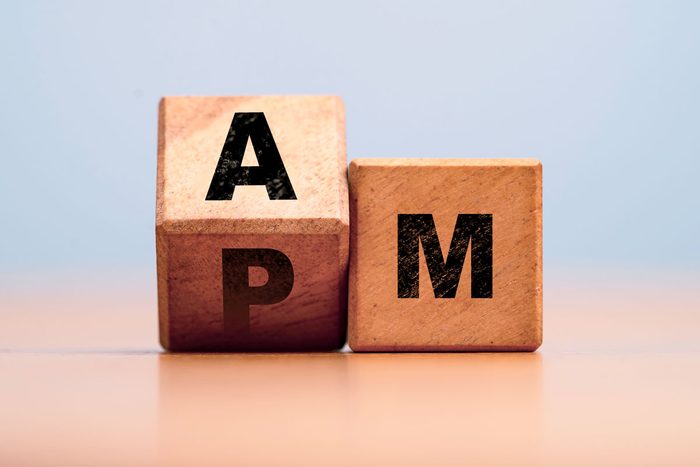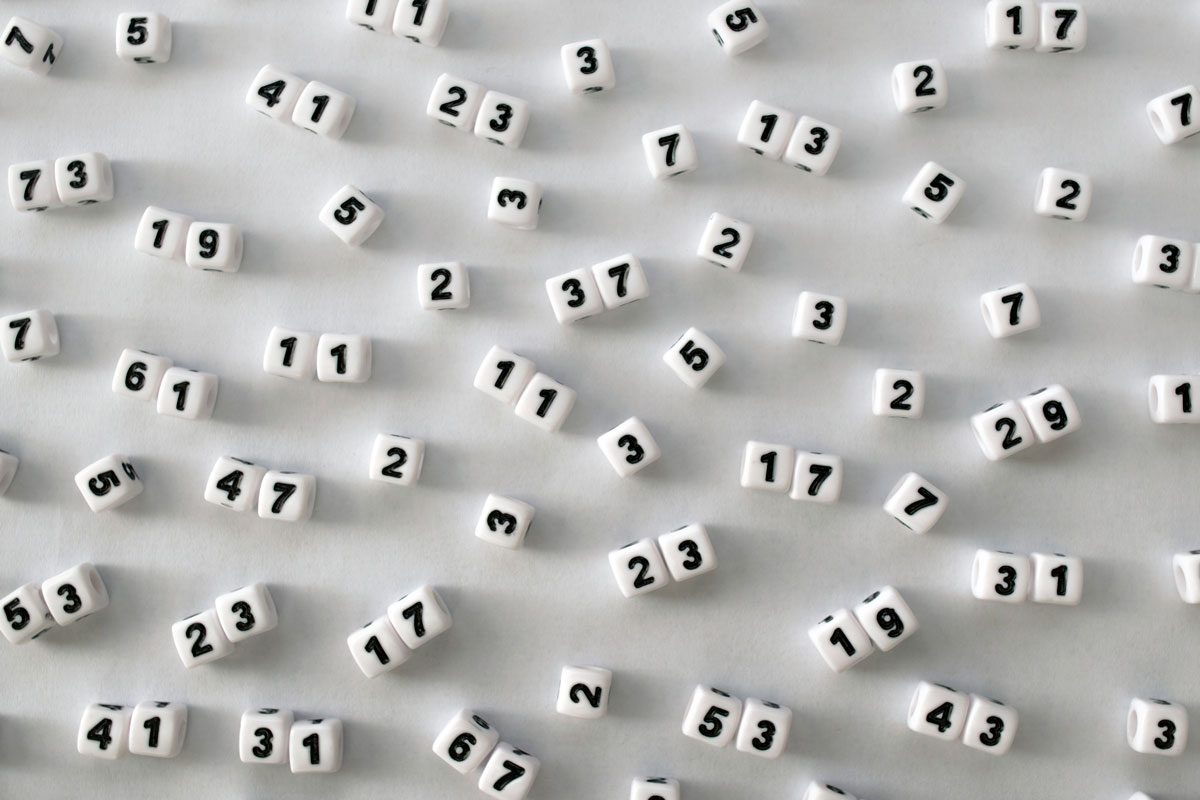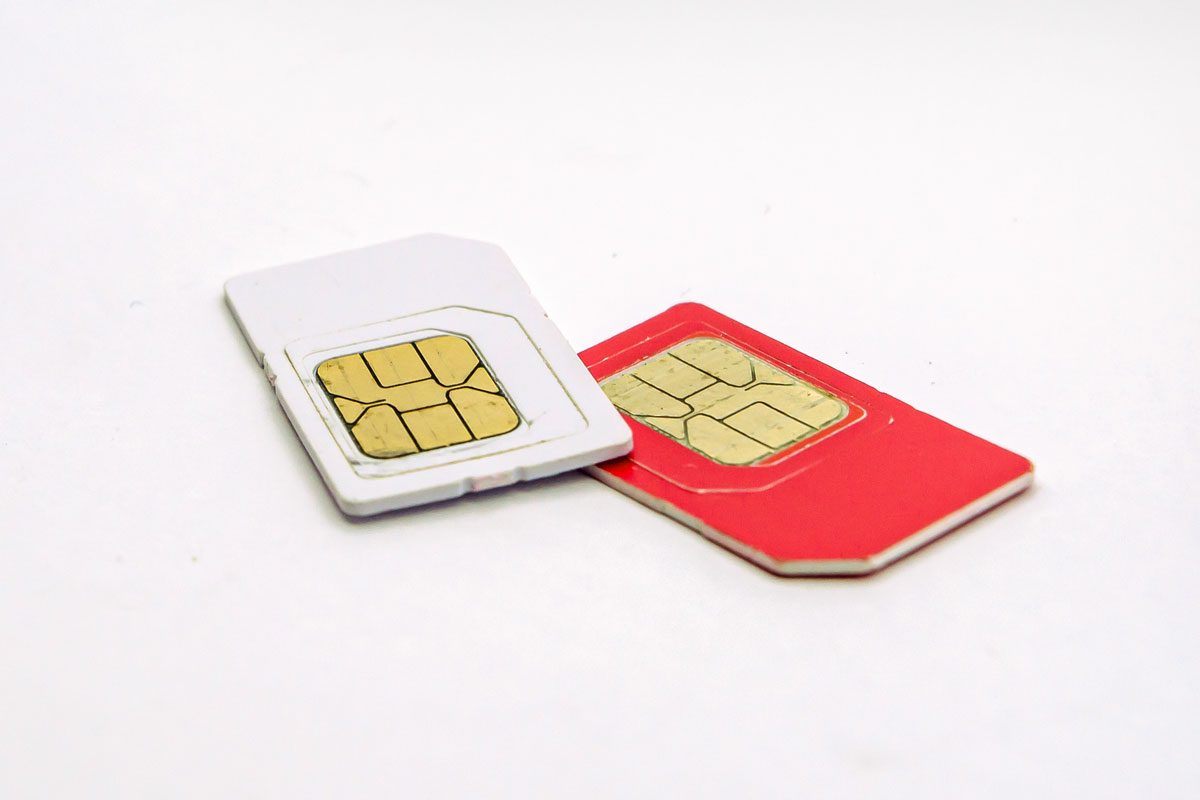From informal texts to published academic works, these common abbreviations appear everywhere. But do you know what they really mean?

13 Common Abbreviations and What They Mean


No.
When it comes to common abbreviations, our No. 1 question is: Why is No. the abbreviation for number, since there’s no o in the word? Well, there may not be an o in number, but there is one in the Latin word numero, which is where the English word originated. The number abbreviation comes from a symbol meaning “number” (also derived from numero) that depicted a capital N with a miniature o, often as a superscript (Nº). Over time, the signal morphed into No.

Lb.
How did the letters l and b get to be the abbreviation for pound, a word that contains neither of those letters? It has to do with the origins of the word. The English word pound originates from Latin, specifically from an ancient Roman unit of measurement called a Libra pondo, meaning “a pound by weight.” Pondo became the English word pound, while the term Libra provided the origin for the lb abbreviation. This is also the reason why the abbreviation for the British currency—pound—resembles an l.

Oz.
The abbreviation oz. for ounces may make a bit more sense than lb for pound, but it’s still a little perplexing. Where does the z come from? Well, the word ounces, just like its big cousin pounds, originates from a Latin word. The Roman Empire called an ounce uncia. According to an explainer by The Week, as uncia evolved through the other Romance languages, it became unce in Anglo-French, leading to the English ounce. In Medieval Italian, the word was onza, which is where the z in the abbreviation comes from.

A.m. and p.m.
Here’s another prime example of a common abbreviation whose roots are in Latin. Most people use “a.m.” and “p.m.” every day to refer to different times, without any idea what they stand for—and understandably so. While a.m. stands for ante meridiem, or “before noon,” p.m. is an abbreviation of post meridiem, meaning (you guessed it) “after noon.” Post, meaning “after,” is a very familiar Latin loanword that we use all the time; we just may not realize that it’s the p in p.m. too.

PIN
When an ATM asks for your PIN, you know that this means the machine needs a four (or more)-digit number to identify your account. But do you know what PIN actually means? The three letters stand for “personal identification number.” We have a Scottish engineer named James Goodfellow to thank for this technological innovation; Goodfellow received a patent for an automatic cash machine—which included a PIN pad—in 1966.
Grammar tip: Never say “PIN number.” If you do that, you’re essentially saying, “personal identification number number.” The PIN abbreviation already has the word number embedded in it.

Cc
We see this handy pair of letters whenever we send an email, and we know it’s a super-simple way to send a message to someone who isn’t the primary recipient. But how many of us know the origin of this common abbreviation? Well, it’s short for “carbon copy” and references the technique of printing an identical copy of a typewritten document onto carbon paper, dating back to the late 19th century. According to Merriam-Webster, the use of cc as a verb—meaning to add a recipient to an email—began in 1983.
Another abbreviation worth knowing is bcc, which stands for “blind carbon copy”; if you bcc a message, it means that you can send it to someone else without the primary recipient seeing.

USB
USB ports help us charge our devices, connect mice and keyboards to our computers, and access files on any computer (thanks to USB drives). With the coming of new-age tech, some of us might take the USB technology for granted, including the fact that the abbreviation stands for “Universal Serial Bus.” Wondering what buses could possibly have to do with computer gadgets? It’s not that kind of bus. In computer speak, a bus is a set of conductors that creates a transmission path. The company Intel produced the first integrated circuits that could support USB technology in 1995.

Et al.
This abbreviation, most often used to list a group of people without naming every single name, comes from the Latin phrase et alia. The phrase means “and others,” which explains why it’s used in scholarly articles to represent the other authors of a work besides the primary one. The Latin word alia is actually where our word for a false name, alias, comes from. This abbreviation is a little tricky punctuation-wise because the et in et al. is not actually an abbreviation. Only the al needs a period after it.

CV
During your most recent job search, you may have come across this term, which basically means a slightly fancier, more in-depth résumé. Sure enough, the letters cv come from Latin; they’re short for curriculum vitae. This phrase translates to “course of life.” Now that’s one way to think of a résumé—it certainly makes it sound less commonplace! The use of this phrase with reference to job applicants first appeared in the early 1900s, according to Merriam-Webster.

MO
If you’ve ever described someone’s mannerisms or habits by saying, “That’s just his MO!” without knowing what the m and the o stand for, you’re not alone. This common word’s origin comes from the Latin modus operandi, meaning “method of operating,” and it was originally used to describe the behavior of criminals (and sometimes still is).

SIM
If you have a cellphone, it most likely uses a SIM card that allows you to connect to the network. But these cards also carry unique information about each cell user, which is why SIM stands for “Subscriber Identity Module.” Since the SIM card holds specific information about the user, it provides a way for the network to distinguish individual subscribers. The first SIM card appeared with the debut of GSM (Global System for Mobile communications) technology in 1991.

Mrs.
This is another confusing abbreviation with a stray letter that doesn’t seem to belong there. Where does that r come from? And what, exactly, is Mrs short for anyway? While today we pronounce it as “missus,” it originally stood for mistress. This word, dating all the way back to Middle English, was the female counterpart to master and simply referred to the primary woman in a household, or a female caretaker. As the connotations of the word mistress evolved in the late 18th century to be less positive, missus became the primary word for the woman of a household. Today, the abbreviation Mrs. is the most common form.

Stat
When you spill something and yell, “I need some paper towels, stat!” you’re speaking Latin—and you probably don’t even realize it. Stat is short for statim, the Latin word for “immediately.”
Why trust us
At Reader’s Digest, we’re committed to producing high-quality content by writers with expertise and experience in their field in consultation with relevant, qualified experts. We rely on reputable primary sources, including government and professional organizations and academic institutions as well as our writers’ personal experiences where appropriate. We verify all facts and data, back them with credible sourcing and revisit them over time to ensure they remain accurate and up to date. Read more about our team, our contributors and our editorial policies.
Sources:
- Merriam-Webster: “Abbreviation”
- Oxford English Dictionary: “I.e.”
- Oxford English Dictionary: “E.g.”
- Merriam-Webster: “Abbreviation of no.”
- The Week: “Why are pound and ounce abbreviated as ‘lb’ and ‘oz’?”
- BBC: “The man who really invented the cash machine”
- Merriam-Webster: “Abbreviation of cc”
- Merriam-Webster: “Word history of curriculum vitae”
- Mental Floss: “Why Is There An ‘R’ in Mrs.?”
